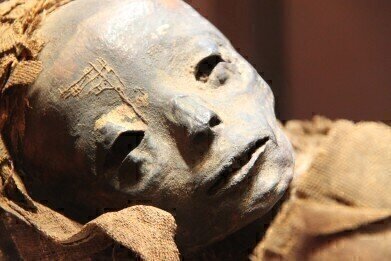Environmental laboratory
How Does Climate Change Affect 7,000-Year-Old Mummies?
Nov 15 2016
While most of the concern surrounding climate change rightly focuses on the future – both short-term and long-term – of our planet, the phenomenon is also having some odd effects on the past, too. In Chile, archaeologists have been baffled by the transformation of 7,000-year-old mummies into black sludge.
The disgusting change has been brought on by an elevation in humidity levels in the South American country, which has boosted the propagation of microbes inside the rotting cadavers. This has led to a rapid deterioration in their conservation and the seeping out of black sludge-like substances.
Long before the Egyptians
You’d be forgiven for thinking that the practice of mummification originated in Egypt… but you’d be wrong. Almost 2,000 years before Cleopatra and her countrymen made the ritual fashionable, the Chinchorro race of hunter-gatherers performed their own version of the process.
Traditionally, it was an honour reserved for children or unborn foetuses and today, some of the oldest mummified specimens in the world are found in the University of Tarapacá in the north of the country. Almost 200 others are located in various museums and centres of learning around the world.
Stretching back so far in time can make it difficult to ascertain details about these ancient humans, but the latest scientific techniques of Raman microscopy (as discussed in detail at the 11th confocal Raman imaging symposium in 2014) have allowed us to estimate the age and the habits of such mummies with relative accuracy.
Conservation jeopardised by climate change
Up until recently, the arid conditions of the Atacama Desert had acted as the perfect incubator for these specimens, preserving them in excellent condition to allow us a unique insight into the far distant past of the human race.
However, climate change has put all of that into jeopardy in the last 10 years. The rising humidity brought on by manmade global warming has encouraged the growth of microbial bacteria inside the decaying flesh of the mummies, speeding up the decomposition process. An unpleasant by-product of the phenomenon is a black goo seeping out from the mummies’ bandages, which was first discovered last year.
12 months on, the situation has not improved and as a result, local authorities have applied to UNESCO to recognise the mummies as a world heritage site. It’s hoped that approval from UNESCO will lead to better awareness of the problem and increased funding not only for those working with the Chilean mummies, but in similar disciplines around the world.
“The application is not a goal in itself, but the start of a process, of improved conservation tools, with the Chilean state and the international community,” explained Sergion Medina Parra, head of the anthropology department at the University of Tarapacá.
Digital Edition
AET 28.4 Oct/Nov 2024
November 2024
Gas Detection - Go from lagging to leading: why investment in gas detection makes sense Air Monitoring - Swirl and vortex meters will aid green hydrogen production - Beyond the Stack: Emi...
View all digital editions
Events
Jan 12 2025 Abu Dhabi, UAE
Jan 14 2025 Abu Dhabi, UAE
Jan 20 2025 San Diego, CA, USA
Carrefour des Gestions Locales de L'eau
Jan 22 2025 Rennes, France
Safety, Health & Wellbeing LIVE
Jan 22 2025 Manchester, UK



















